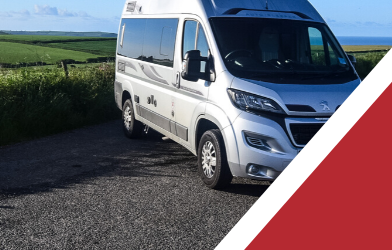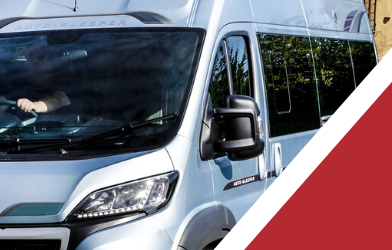Have motorhome, will travel – with all the freedom of the open road. And, if you are motorhoming across Europe, that might be a very long way indeed.
It’s that freedom to follow wherever the road takes you that beckons many a motorhome owner. It’s likely to be inspiration enough to drive aboard a cross-Channel ferry every once in a while and make an extended trip onto the Continent.
If you are fairly new to motorhoming or have only ventured out on a few quite local weekend breaks, you might find the prospect of driving longer distances, far from home, in a country whose language you barely speak, more than a little daunting.
As the many thousands who have gone before you are almost certain to reassure you, however, it is really not so challenging as it might first appear – and the sense of first-hand adventure and satisfaction in discovering new and exciting places well off the beaten track are likely to prove their own rewards.
However, even for shorter stints of the travelling life, there are still a number of things to take care of when planning your motorhoming across Europe.
As a posting by the Wandering Bird warns, Brexit has meant that anyone venturing to Europe from the UK is now considered a visitor from a third country – so there are inevitably some major changes of which you must be aware (notably, the need to carry your passport, arrange suitable travel insurance, and check your driving licence).
Driving
If you can handle driving your motorhome in the UK, you are likely to feel just as at home on the roads and motorways of Europe.
Perhaps some of the variables that catch out many drivers are speed limits, which naturally change according to conditions in built-up areas, on country roads, and on motorways – and may depend on the size of your motorhome, specifically whether it is more or less than 3,500kg in laden weight (the Maximum Authorised Mass, or MAM, which you are likely to find printed near your vehicle’s VIN plate).
In built-up areas, the usual speed limit is 50kph but beware of variations.
If you are driving a large motorhome of more than 3,500kg, the restriction on motorways might vary from as slow as 50kph in Gibraltar to 110kph in Portugal.
In some countries, larger motorhomes are prohibited from using the “fast” outside lane of three-lane motorways, so lowering the maximum speed at which you are permitted to drive.
Onboard essentials
Most countries in Europe have certain safety equipment and warning devices that must always be carried onboard a motor vehicle such as your motorhome.
One of the most notable changes post-Brexit is that, since late September 2021, any vehicle registered in the UK and entering the EU must bear a UK sticker (and not a GB sticker) near or incorporated into the number plate on the rear of the vehicle).
The list of additional onboard essentials varies from one country to another but might include such diverse items as hazard warning triangles (two of them in some countries), a reflective jacket, a first-aid kit, a fire extinguisher, and spare bulbs.
One of the quirks of driving in France was previously the need to keep on board a breathalyser kit. While that is no longer a legal requirement, it is worth remembering that the blood-alcohol limit when driving in France is lower than in the UK – so stay on your guard and preferably avoid alcohol altogether if you are going to be driving.
The RAC has country specific checklists on its travel pages.
Make the effort to learn a few words
Although courteous, the naturally official tone of any police that might stop you along your way is of course likely to be off-putting, especially if your knowledge of the local language is sketchy or non-existence. A trusty phrasebook – or these days, a translation app on your mobile, is likely to prove a God send.
Finally, before you travel, don’t forget to check your motorhome insurance includes continental cover and that you have carried out all the necessary safety checks for safe travels.




